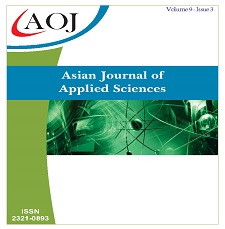Hearing Function among Squadron 11/Attack Helicopter Pilots in 2019–2020
DOI:
https://doi.org/10.24203/ajas.v9i3.6657Keywords:
hearing function, helicopter pilotAbstract
Noise-Induced Hearing Loss (NIHL) is sensorineural deafness resulting from prolonged exposure to loud noise. In the military environment, personnel with NIHL are often found. One of the professions that are at risk for NIHL is an aviator. Some of the factors that influence the degree of deafness are age and length of work. This research is a descriptive quantitative observational study with a cross-sectional design. The research subjects were Squadron 11/Attack helicopter pilots at Achmad Yani Air Base, Semarang, totaling 32 pilots, which were taken from medical record data. Sampling was done by total sampling. The data obtained were processed using SPSS and grouped into tables accompanied by descriptive explanations of each characteristic. The audiogram results showed that 32 pilots were normal, across all age and length of service categories. This result is due to the appropriate use of hearing protection device (HPD), in the form of a helmet that reduces noise up to 14 dB at 250 Hz, 21 dB at 1000 Hz, 26 dB at 2000 Hz, 37 dB at 4000 Hz, and 42 dB at a frequency of 8000 Hz, which pilots use. The pilot's working time is relatively short with a flight training schedule only
2 times a week and a flight time of around 2-3 hours. The conclusions of the study showed a description of normal hearing function in all Squadron 11/Attack helicopter pilots, based on age and length of service.
References
Taneja MK. Noise Induced Hearing Loss. Indian J Otol. 2014;20(4):151– 4
Septiana NR, Widowati E. Gangguan Pendengaran Akibat Bising. HIGEIA J Public Heal Res Dev. 2017;1(1):73–82. http://journal.unnes.ac.id/sju/index.php/higeia.
Menteri Kesehatan Republik Indonesia. Peraturan Pemerintah tentang Kebisingan yang Berhubungan dengan Kesehatan. Indonesia; 1987.
Sound Hearing 2030. Society for Sound Hearing. http://www.soundhearing2030.org/about.php. Published 2010. Accessed April 9, 2020.
Garcia SL, Smith KJ, Palmer C. Cost-Effectiveness Analysis of a Military Hearing Conservation Program. Mil Med. 2018;183(9–10):547–53.
Soepardi EA, Iskandar N, Bashiruddin J. Gangguan Pendengaran. In: Soepardi EA, ed. Buku Ajar Ilmu Kesehatan Telinga Hidung Tenggorok Kepala dan Leher. 7 ed. Jakarta: Badan Penerbit FK UI; 2012:17–20.
Suwento R. Standar Pelayanan Indera Pendengaran di Puskesmas. Kom Nas Gangguan Pendengaran dan Ketulian. 2007.
Collee A, Legrand C, Govaerts B, Der Veken Paul V, De Boodt F, Degrave E. Occupational Exposure to Noise and The Prevalence of Hearing loss in a Belgian military population: A cross-sectional study. Noise Heal. 2011;13(50):64–70.
Muhr P, Rosenhall U. The Influence Of Military Service On Auditory Health and The Efficaci Of a Hearing Conservation Program. 13 ed.; 2011.
Mahardana KN, Suardana W, Puteri S, Sudana W. Efek Letusan Senjata Api Ringan Terhadap Fungsi Pendengaran Pada Siswa Diktuba POLRI. 2008;1(August):1–12.
Maulana I, Jayanti S, Suroto S. Analisis Implementasi Hearing Conservation Program Di Pt Kaltim Prima Coal. J Kesehat Masy. 2016;4(4):682–9.
Dewi Pratiwi. Pengaruh Tingkat Kebisingan Pesawat Herkules Dan Helikopter Terhadap Terjadinya Gangguan Pendengaran Pada Penerbang Tni Au. J Fak Kedokt Univ Sebel Maret Surakarta. 2012.
Mulyono M, Kandou L. Hubungan Karakteristik dengan Peningkatan Ambang Pendengaran Penerbang di Balai Kesehatan Penerbangan Jakarta. Indones J Occup Saf Heal. 2013;2(1):1–9.
Nurfitriyana, July I, Pramusinto A. Faktor-faktor yang Berhubungan dengan Terjadinya Gangguan Pendengaran pada Pilot Helikopter dan Casa. 2020;2(5):22–30.
Kemenakertrans RI. Permenakertrans No. Per.13/MEN/X 2011 tentang Nilai Ambang Batas Faktor Fisika dan Faktor Kimia di Tempat Kerja. Permenakertrans No Per13/MEN/X/2011 tentang Nilai Ambang Batas Fakt Fis dan Fakt Kim di Tempat Kerja. 2011:1–54.
Buchari. Kebisingan Industri dan Hearing Conservation Program. USU Repos. 2007. http://repository.usu.ac.id/handle/123456789/1435.
PT Safety Sign Indonesia. Standar Internasional EN 352: Panduan Memilih Alat Pelindung Pendengaran yang Tepat. www.SafetySign.co.id.
Corporation G. High Performance Flight Equipment. Gentex Corporation; 2017. gentexcorp.com.
Gerges SN, Sehrndt GA. Personal Measures and Hearing Conservation. Dortmund;2014.https://www.who.int/occupational_health/publications/n oise11.pdf.
Syah PB. Faktor yang Mempengaruhi Noise Induced Hearing Loss dan Tinitus pada Pekerja Bengkel Mesin Terpapar Bising di PT DOK dan Perkapalan Surabaya. Univ Airlangga. 2016;30(28). http://repository.unair.ac.id/35236/.
Eryani YM, Wibowo CA, Saftarina F. Faktor Risiko Terjadinya Gangguan Pendengaran Akibat Bising. Bagian Ilmu Kedokt Komun Fak kedokteran, Univ Lampung. 2017;7:112–7.
Downloads
Published
Issue
Section
License
Copyright (c) 2021 Sigit Sasongko, Awan Buana, Dara Fuji Rahayu, Wildan Kurniawan

This work is licensed under a Creative Commons Attribution-NonCommercial 4.0 International License.
- Papers must be submitted on the understanding that they have not been published elsewhere (except in the form of an abstract or as part of a published lecture, review, or thesis) and are not currently under consideration by another journal published by any other publisher.
- It is also the authors responsibility to ensure that the articles emanating from a particular source are submitted with the necessary approval.
- The authors warrant that the paper is original and that he/she is the author of the paper, except for material that is clearly identified as to its original source, with permission notices from the copyright owners where required.
- The authors ensure that all the references carefully and they are accurate in the text as well as in the list of references (and vice versa).
- Authors retain copyright and grant the journal right of first publication with the work simultaneously licensed under a Attribution-NonCommercial 4.0 International that allows others to share the work with an acknowledgement of the work's authorship and initial publication in this journal.
- Authors are able to enter into separate, additional contractual arrangements for the non-exclusive distribution of the journal's published version of the work (e.g., post it to an institutional repository or publish it in a book), with an acknowledgement of its initial publication in this journal.
- Authors are permitted and encouraged to post their work online (e.g., in institutional repositories or on their website) prior to and during the submission process, as it can lead to productive exchanges, as well as earlier and greater citation of published work (See The Effect of Open Access).
- The journal/publisher is not responsible for subsequent uses of the work. It is the author's responsibility to bring an infringement action if so desired by the author.


